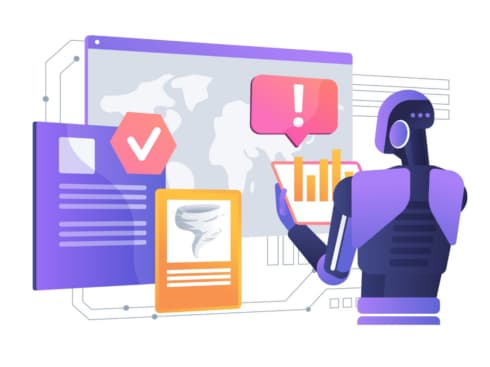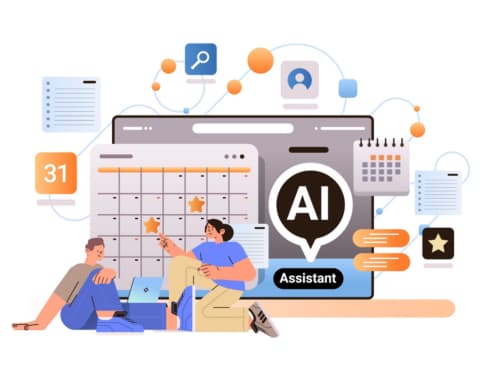
Welcome to the Golden Age of ecommerce, a fantastic time when 2.14 Bn shoppers are looking for brands to shop from. Attracting their attention isn’t too tricky
With personalisation, a brand can invest in cultivating a personal relationship with each buyer. This pays handsomely. D2C brands have already witnessed a 25% increase in revenue
By developing content at scale and leveraging AI, you can determine what content serves which customer, track impact, and deliver the right content to the right audience via the right channel
Welcome to the Golden Age of ecommerce, a fantastic time when 2.14 Bn shoppers are looking for brands to shop from. Attracting their attention isn’t too tricky. The real task is to know how to convert a shopper into an influencer.
Take a look at this case study. Rolls Royce, the most premium car in the world, is personalised for every customer. Customers who pay $100K for a premium luxury car are willing to reward $1 Mn for a Rolls Royce. Why? Because it treats customers like royalty. This is the power of personalisation and is the key to making every purchase as unique as buying a million-dollar car.
Ecommerce brands have long chased personalisation in their marketing campaigns and pre-purchase journeys, but most fail to take it beyond customising the buy button. Once the order is placed, the experience is still vanilla (non-personalised). This needs to change as customers remember post-purchase journeys the most.
The only way to differentiate your brand from those methodically bombarding customers with targeted ads is to make an extra effort to personalise the post-purchase experience.
The Secret Science Behind Personalisation
The enigma of personalisation is deeply rooted in human psychology and our expectations. Ever heard of ‘The Cocktail Party Effect’? This psychological theory developed by Colin Cherry explains why personalisation works — we gravitate toward information relevant to us, and our auditory systems are tuned specially to capture our names.
A study by Accenture has confirmed that 91% of online consumers are likely to engage with a brand that recognises their name and provides relevant offers. Moreover, 65% of customers would buy from a brand that understands their purchase history and preferences.
Designing your customer engagement strategy around personalisation ensures that consumers are not shoved into aggregate buyer personas or targeted population groups.
With personalisation, a brand can invest in cultivating a personal relationship with each buyer. This pays handsomely. D2C brands have already witnessed a 25% increase in revenue.
The Key To Post-Pandemic Recovery Is A Shot Of Post-Purchase Personalisation
Personalisation has a direct correlation with post-purchase customer experience. The more attune a post-purchase journey is to a customer, the lesser the chance of their post-purchase dissonance. There are more concrete reasons why we think personalisation is a deciding factor in the post-purchase journey:
Ensures Customer Loyalty
The shopper’s journey moves in a continuum. Over time, personalisation becomes the key to repeat engagement. Regular interactions build more customer data that assist brands in designing ever more relevant experiences — generating robust and long-term customer lifetime value and loyalty.
Post-purchase personalisation increases customer retention by 40% and savings by five times that would otherwise be spent on acquiring new customers.
Drives Repeat Purchases
McKinsey’s Next in Personalisation 2021 study confirms that 71% of consumers demand ecommerce companies deliver personalised interactions. When brands adhere to this demand, they earn 40% more revenue than their counterparts.
This outcome cements the importance of personalisation, especially in the post-purchase phase, where there is maximum potential for re-engaging customers for re-purchases.
Positive Brand Perception
Three-quarters of consumers say that personalised communications are a key factor in prompting their consideration of a brand.
Creating convenience in navigating the online website or retail store, customising shipping options, establishing 1:1 communication channels, and tailoring messages and content to follow up post-purchase cement a positive brand experience.
Ways To Incorporate Personalisation In Post-Purchase Customer Experience
Create Touchpoints To Stay In Contact With Customers
Communication is the key channel through which a brand establishes dialogues with customers, especially after purchasing something.
Tailor-made messages incorporating the buyer’s name in the email with relevant product recommendations have a 217% more open rate than one with a generic message. Monica Vinader, Nykaa, and Damensch are brands leveraging AI technology to create rich customer profiles and suggest relevant products in personalised emails.
You can also personalise SMS notifications catering to order status, delays, and delivery updates. Here, you can also add personalisation elements by informing customers what the package will look like and where it will be delivered (curbside or mailbox).
Tracking pages
Post-purchase notification is incomplete without an order tracking page. You can treat this space as a blank canvas, filling it with information, featured products, FAQs, or another mechanism that promotes customer engagement and additional sales.
By transforming the company-centric sales strategy into a customer-centric product recommendation tool, you can increase the chances of impulse buying.
Magnify The Unboxing Experience
Personalising unboxing lets you assure your customers that you are mindful of their interests. For example, Neeman’s, a sustainable shoe brand, gives its customers sustainable packaging, nodding to the environmentalists in their hearts.
SMBs tend to gain a lot by practising personalised packaging. Cosy, snuggly packed items with sprinkles of confetti and handwritten thank you notes and messages are the best way for small businesses to connect with customers personally. Sometimes even extra stickers bring a smile to students seeking stationery or sneaking in a special promotion coupon from an apparel store.
Personalising Returns
Streamlining returns is the key indicator of a positive post-purchase journey. Like every other element in the shopping continuum, it is highly recommended to personalise returns.
Some companies like DSW offer VIP returns membership programs, and ThredUP provides customised benefits to encourage faster returns.
Conclusion: Customising The Complete Shopping Experience
Personalising the post-purchase journey is only one end of the spectrum. Cart abandonment messages, remainders from the wishlist, and omnichannel strategies like BOPIS bolster the personalised post-purchase journey.
Taking the extra mile starts with augmenting technology. Personalisation relies on data analytics. You can utilise predictive analytics and deep algorithms to generate faster and more accurate customer profiles. Data analytics build a granular view by examining the customer life cycle and targeting factors in their behavioural, transactional, and engagement trends.
The goal of accumulating data is to define the company’s personalisation objectives and ground its efforts in customer-centric KPIs. By developing content at scale and leveraging AI, you can determine what content serves which customer, track impact, and deliver the right content to the right audience via the right channel.




 Fintech
Fintech Travel Tech
Travel Tech Electric Vehicle
Electric Vehicle Health Tech
Health Tech Edtech
Edtech IT
IT Logistics
Logistics Retail
Retail Ecommerce
Ecommerce Startup Ecosystem
Startup Ecosystem Enterprise Tech
Enterprise Tech Clean Tech
Clean Tech Consumer Internet
Consumer Internet Agritech
Agritech































